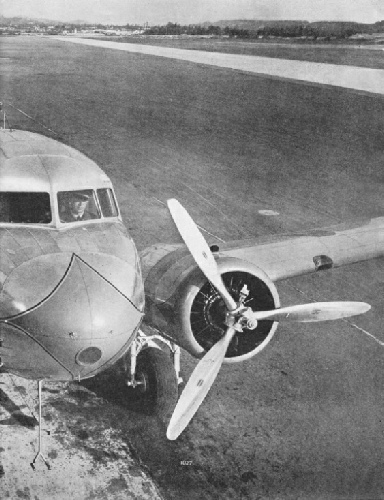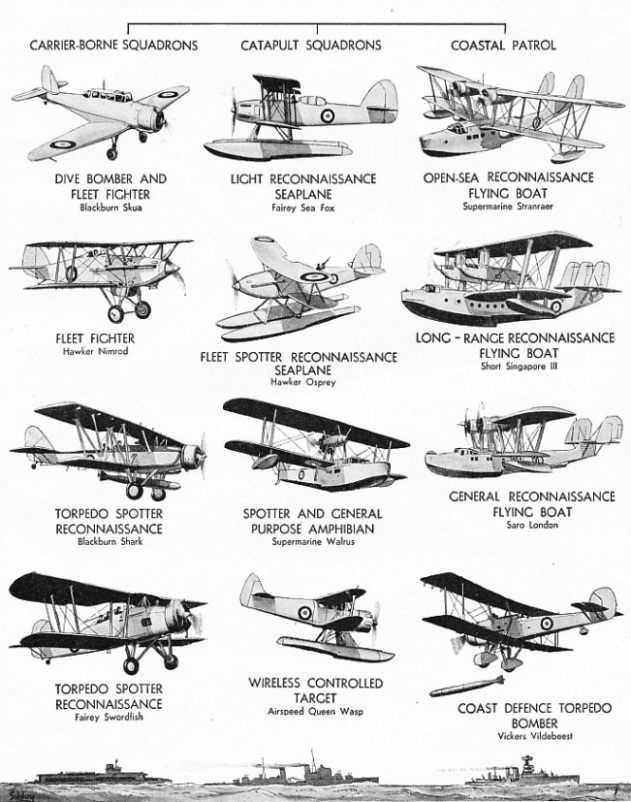
© Wonders of World Aviation 2015-




Part 38
Part 38 of Wonders of World Aviation was published on Tuesday 22nd November 1938, price 7d.
This part included a central photogravure supplement further illustrating the article on Commercial Flying in the USA.
The Cover
The cover on this week’s Part shows an “Autogiro” aircraft flying at Hamble. Hampshire.
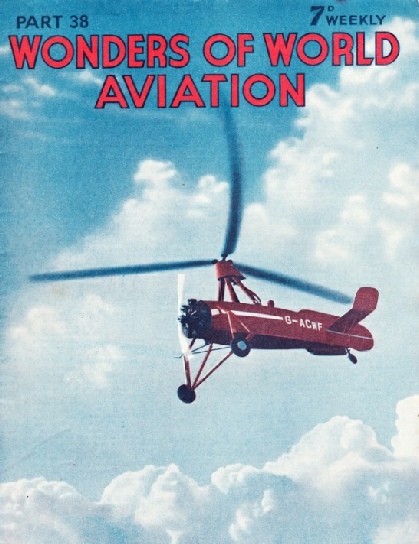
Controllable-Pitch Airscrews
The introduction of the controllable-pitch airscrew is one of the greatest advances in aeronautical engineering of recent years. This article describes how the blade-pitch of an aeroplane propeller is automatically varied to give maximum engine efficiency.
Contents of Part 38
A Leader of British Aviation (Part 2)
Major W. G. Barker, VC
Controllable-Pitch Airscrews
Commercial Flying in the USA
Commercial Flying in the USA (photogravure supplement)
Representative British Service Aircraft - 2
Wings Over the Forest
The De Havilland Comet
A Spectacular Record Breaker (Part 1)
Claude Grahame-White: a Leader of British Aviation (Part 2)
This chapter describes the work of Claude Grahame-White .
The article is the seventeenth in the series Makers of Air History and is concluded from part 37.
Commercial Flying in the USA
Photogravure Supplement
MAIL BEING TAKEN ON BOARD at Glendale, California. The aircraft is one of the American Airlines fleet. Air mail is the basis of the vast system of air routes which covers the United States. The first regular air mail services were begun in 1918, but not until 1924 were the coast-to-coast air mails first carried entirely by aircraft. Before this the mails were transferred to railways for conveyance by night.
Pages 1026 and 1021
Commercial Flying in the USA Photogravure Supplement - 2
AN UNUSUAL VIEW of a Douglas DC-3 air liner of American Airlines receiving passengers at Glendale Aerodrome. This photograph emphasizes the height of the pilots above the ground in a giant air liner, a position from which the landing of the aircraft calls for considerable skill. To the right of the illustration is seen one of the concrete runways.
Commercial Flying in the USA
There are 30,000 miles of internal airways operated on regular commercial schedules in the USA. This chapter surveys twenty American commercial aviation companies and the routes which they operate.
Major William George Barker, VC
The story of Major William George Barker, VC, who survived the war of 1914-18 with figty-two victories to his credit.
This article is the seventh article in the series Epics of Service Flying.
Commercial Flying in the USA
Photogravure Supplement - 3
AIR LINER WINGS, stored at the Douglas factory at Santa Monica, California, being inspected by two air liner hostesses. Douglas aircraft of the DC-2 and DC-3 types have proved extremely popular with air line operators in America. A larger Douglas type - the DC-4 - is scheduled for regular use on several routes by 1939.
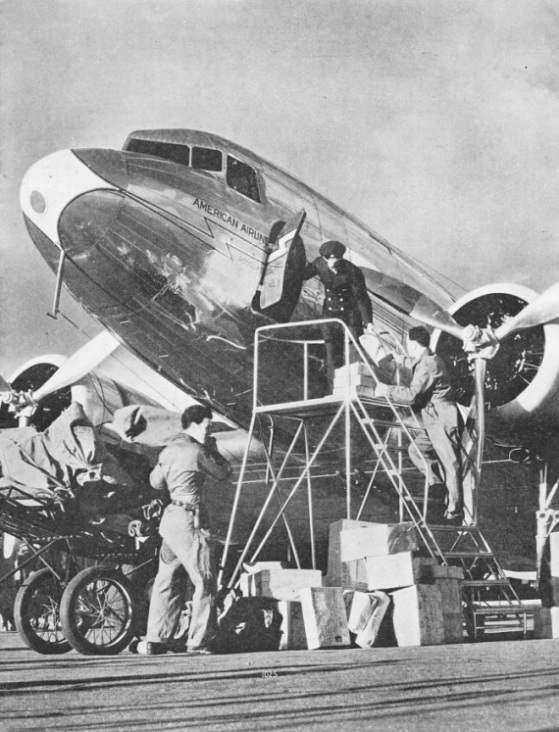
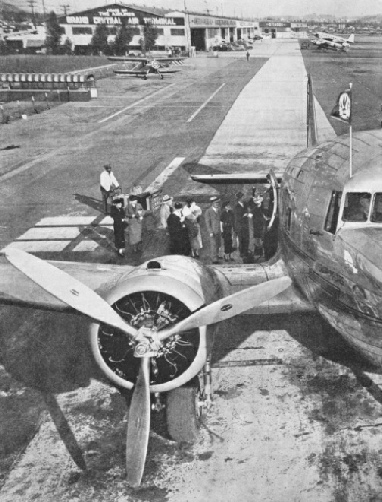
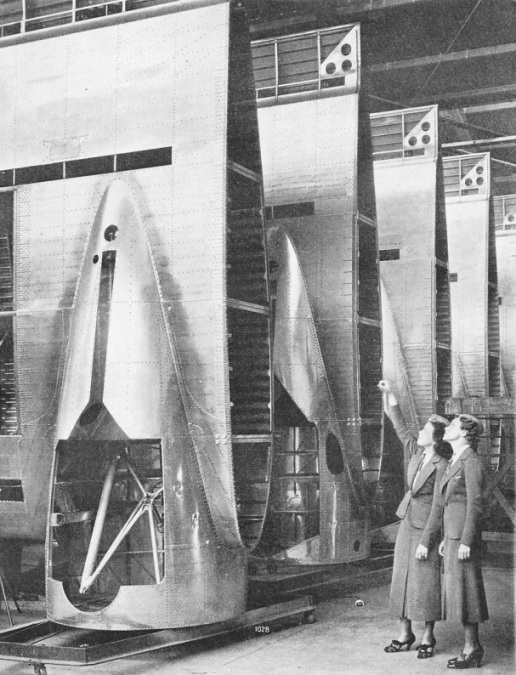
Fire Fighting and Surveying in Canada
This chapter describes the ways in which aircraft assist fire fighting and map preparation in the wooded regions of Canada.
The De Havilland Comet
This article describes the De Havilland Comet, a high-speed racing monoplane which holds many long-distance flying records.
It is the fifth article in the series on Famous Aircraft.
Harry Hawker (Part 1)
The Empire has sent us many great aviators; Australia in particular has sent many famous fliers, from the earliest days of the aeroplane. One of the most picturesque of the Australians to come to Great Britain was Harry Hawker, whose career forms the subject of this chapter in the series “Makers of Air History”. A great deal of Hawker’s fame rests on his failure to cross the North Atlantic when he and Commander Mackenzie Grieve, R.N., were forced down in the sea. Hawker and Grieve were missing for a week. The publicity given to the flight in general and to the period in which they were missing in particular was out of all proportion to the small importance of the flight, and a bad example of that hysteria peculiar to long-distance flights.
Even so, I thought the public should have an opportunity of greeting Hawker at the London Aerodrome, with which I was then associated, and in cooperation with Claude Grahame-White I arranged for an aerial reception. Hawker’s North Atlantic attempt was little more than a courageous effort. This chapter shows that Hawker’s contributions to aviation were more important, particularly his work with the Sopwith Company, than his spectacular attempt to cross the North Atlantic Ocean.
The article is the eighteenth in the series Makers of Air History and is concluded in part 39.
